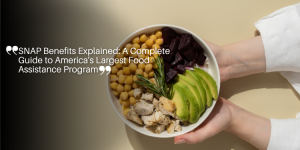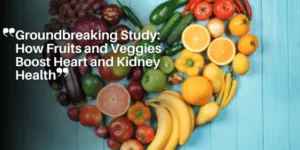WIC Program 2024: Essential Guide to Benefits for Low-Income Mothers and Children
Introduction to WIC: A Lifeline for Vulnerable Families 👩🍼🍎
The Special Supplemental Nutrition Program for Women, Infants, and Children (WIC) has been a crucial support system for millions of Americans since its inception.
Its primary mission is to enhance the health and well-being of low-income pregnant women, new moms, and their babies and young children who are at nutritional risk.
WIC’s comprehensive support helps foster healthier families and communities.

Key Statistics 📊
WIC’s impact is far-reaching. In fiscal year 2023, the program served approximately 6.6 million individuals on a monthly basis, covering around 39% of all infants in the United States.
This extensive reach underscores WIC’s essential role in supporting some of the most vulnerable members of society.
The program operated with a budget of $6.6 billion, demonstrating the significant investment needed to provide these crucial services.
Program Mission 🎯
At the heart of WIC’s mission lies a dedication to safeguard the health of its participants.
This is done through a combination of nutritional education, food supplements, breastfeeding support, and referrals to healthcare and other social services.
By addressing the specific needs of pregnant and postpartum women, as well as infants and children under five, WIC aims to mitigate nutritional deficiencies and foster healthier early development.
WIC’s work is vital in preventing various health issues associated with poor nutrition among low-income families.
Through tailored food packages and continuous support, the program ensures that participants have access to the necessary nutrients and educational resources to make informed dietary choices.
The program’s impact extends beyond mere statistics, shaping healthier futures for countless families by providing the foundational support needed during critical early development stages.
By ensuring that nutritional needs are met, WIC plays a pivotal role in the broader public health landscape 🏥.
Who Qualifies for WIC Benefits? 🧾
To access the life-changing benefits of the WIC program, certain eligibility criteria must be met.
The first threshold involves categorical eligibility, which includes specific groups: pregnant women, postpartum women, infants, and children under five years old.
Every category helps ensure that nutritionally at-risk individuals receive the support they need.
Income Requirements 💰
Income is another significant determinant for WIC eligibility.
Families must have an income at or below 185% of the federal poverty level.
Alternatively, eligibility can be demonstrated through participation in other assistance programs such as the Supplemental Nutrition Assistance Program (SNAP), Medicaid, or Temporary Assistance for Needy Families (TANF).
This inclusive approach ensures that vulnerable families don’t miss out on essential nutritional support just because their circumstances vary.
Nutritional Risk Assessment 🩺
A vital part of the WIC qualification process involves a nutritional risk assessment.
This assessment is carried out by WIC-competent professionals who evaluate the applicant’s health and nutrition status.
The comprehensive evaluation may include checking for medical conditions, dietary patterns, and other factors impacting nutritional well-being.
By establishing clear criteria and thorough assessments, WIC ensures that the benefits reach those who need them most.
This commitment creates a sturdy foundation for young families to thrive.
Comprehensive Benefits Package 🎁
Nutritious Food Supplements 🥛
WIC provides a tailored selection of nutritious food supplements designed for the unique dietary needs of pregnant women, postpartum women, infants, and children under five.
These supplements include items rich in essential nutrients such as protein, iron, calcium, vitamin A, and vitamin C.
Breastfeeding Promotion and Support Services 🤱
One of the core components of WIC is the emphasis on breastfeeding promotion and support.
WIC encourages breastfeeding as the optimal source of nutrition for infants and provides comprehensive support to breastfeeding mothers.
This includes counseling sessions, educational resources, and peer support groups.
Nutrition Education 🧠
WIC offers extensive nutrition education to its participants, giving them the information they need to choose healthy foods.
These programs often include cooking demonstrations and group discussions to promote healthier habits.
Referrals to Healthcare and Other Social Services 🏥🏠
Beyond providing food and education, WIC serves as a vital link to additional support services.
Participants are referred to healthcare providers for medical check-ups and immunizations and also connected to housing assistance, childcare, and employment resources.
Understanding WIC Food Packages 🛒
Seven Customized Food Packages
The Special Supplemental Nutrition Program for Women, Infants, and Children (WIC) offers seven distinct food packages engineered to fulfill the specific nutritional requirements of its diverse participant categories.
Nutrient-Rich Foods for Every Need 🥦🥚
WIC food packages are carefully curated to include foods high in essential nutrients that are often lacking in the diets of low-income families.
Meeting Specific Nutritional Needs 🍽️
By focusing on critical nutrient gaps, WIC ensures that the food provided helps combat common deficiencies and promotes better health outcomes.
Supporting Healthy Development 👶
WIC’s commitment to providing nutrient-rich foods is key to encouraging the healthy development of children and ensuring mothers remain healthy during and after pregnancy.
How WIC Administration Works 🗂️
Federal Oversight and Local Implementation
WIC operates under the oversight of the Food and Nutrition Service (FNS) at the federal level while being locally implemented by 89 state agencies, including Tribal Nations and U.S. territories 🇺🇸.
Wide Coverage and Reach 🗺️
WIC’s extensive network allows it to reach eligible participants even in remote areas, with over 6.6 million beneficiaries monthly, including 39% of all U.S. infants in 2023.
Congressional Funding 💼
WIC’s funding is authorized annually by Congress, reaffirming its commitment to supporting maternal and child health in vulnerable communities.
Cost-Saving Measures and Program Efficiency 📉
Infant Formula Rebate System 🍼
In fiscal year 2023, WIC saved $1.6 billion through its rebate system with formula manufacturers—freeing up funds to serve more families in need.
Competitive Bidding System 📑
This system ensures the best prices for essential nutrition items without compromising quality, through a rigorous bidding process.
Extending Program Reach 📈
Thanks to these savings, WIC was able to serve an additional 1.3 million participants monthly in 2023, expanding support where it’s most needed.
Applying for WIC: Step-by-Step Guide 📝
How to Determine Eligibility and Gather Required Documentation
To apply, eligible participants must gather documents such as proof of income, address, and identification for all applicants.
Meeting the income threshold (or participation in SNAP, Medicaid, or TANF) is required.
Locating Your Nearest WIC Office or Application Center 📍
Visit the USDA’s Food and Nutrition Service website or search “WIC office near me” to find your closest center and begin the application process.
What to Expect During the Application and Assessment Process 📝
When you arrive at the WIC office for your appointment, be prepared for an initial interview and assessment. This process includes:
-
Verification of Documents: A WIC representative will review your provided documentation to verify eligibility.
-
Nutritional Assessment: A WIC-competent professional will conduct a comprehensive nutritional risk assessment, which may involve measuring height, weight, and blood iron levels.
Expect a discussion about your dietary habits and health history to tailor the benefits to your specific needs.
After the assessment, eligible applicants will receive a personalized WIC food package, breastfeeding support information, nutrition education, and referrals to additional healthcare and social services.
With these steps, you’re well on your way to accessing the invaluable support that WIC offers.
Understanding the process and preparing your documentation in advance can make your application experience smooth and efficient ✅.
WIC’s Impact on Public Health 🌎
Evidence-based Outcomes for Maternal and Child Health Improvements
The WIC program plays a crucial role in enhancing the health and well-being of low-income families.
Evidence shows significant improvements in maternal health among WIC participants, including increased intake of essential nutrients and better pregnancy outcomes.
By providing nutritious food supplements, education, and healthcare referrals, WIC helps mothers maintain healthier pregnancies.
Furthermore, access to breastfeeding support services has been shown to increase breastfeeding rates, positively impacting both maternal and infant health.
Contribution to Reducing Infant Mortality and Low Birth Weight Rates 🍼
One of the most remarkable impacts of WIC is its contribution to reducing infant mortality and low birth weight rates.
Studies indicate that participation in WIC is associated with improved birth outcomes, including a reduction in preterm births and low birth weight incidences.
These outcomes are linked to WIC’s comprehensive support system, which ensures expectant mothers receive the necessary nutrients and care to support healthy fetal development.
Long-term Benefits for Childhood Development and Family Nutrition 🌱
WIC’s influence extends beyond immediate health improvements, fostering long-term benefits for childhood development and family nutrition. Children enrolled in WIC exhibit better growth and cognitive development due to early nutritional support.
The program’s emphasis on nutrition education empowers families to make healthier food choices, leading to sustained improvements in dietary habits.
This holistic approach not only addresses current nutritional risks but also promotes lasting health and wellness within communities.
As we delve deeper into the facets of the WIC program, it becomes clear that its positive impact on public health is profound and far-reaching.
Resources and Additional Support 📚
More Information on WIC
For comprehensive details about the WIC program, visit the USDA’s Food and Nutrition Service website.
Here, you can find valuable resources, including up-to-date guidelines, eligibility criteria, and detailed descriptions of the benefits provided.
-
USDA’s Food and Nutrition Service – Offers information about various aspects of the WIC program, including food packages, breastfeeding support, and health referrals.
Complementary Programs 🤝
| Programa | Descrição |
|---|---|
| 🍎 SNAP (Supplemental Nutrition Assistance Program) | Oferece assistência nutricional para ajudar famílias de baixa renda a expandir seu orçamento alimentar e adquirir opções de alimentos mais saudáveis. |
| 🏥 Medicaid | Uma iniciativa colaborativa entre os governos federal e estadual que apoia indivíduos de baixa renda e poucos recursos a cobrir despesas médicas. |
| 👨👩👧👦 TANF (Temporary Assistance for Needy Families) | Fornece assistência financeira temporária com o objetivo de ajudar os pais a se reerguerem e retornarem ao mercado de trabalho. |
While each of these programs has its own set of eligibility requirements, they are designed to help families receive the necessary support they require.
Advocacy and Support Groups 👥
Connecting with advocacy and support groups can offer additional assistance and a sense of community.
These groups offer various forms of support, from educational resources to one-on-one assistance, and they may help you navigate the complexities of the WIC program and complementary services.
-
Reach out to local community centers and non-profits that specialize in maternal and child health.
-
Support groups for breastfeeding mothers, often facilitated by healthcare providers or community organizations.
-
Online platforms and social media communities where you can engage with other WIC participants and share experiences and tips.
By leveraging these resources and additional programs, WIC participants can maximize their benefits and ensure better health outcomes for their families.







